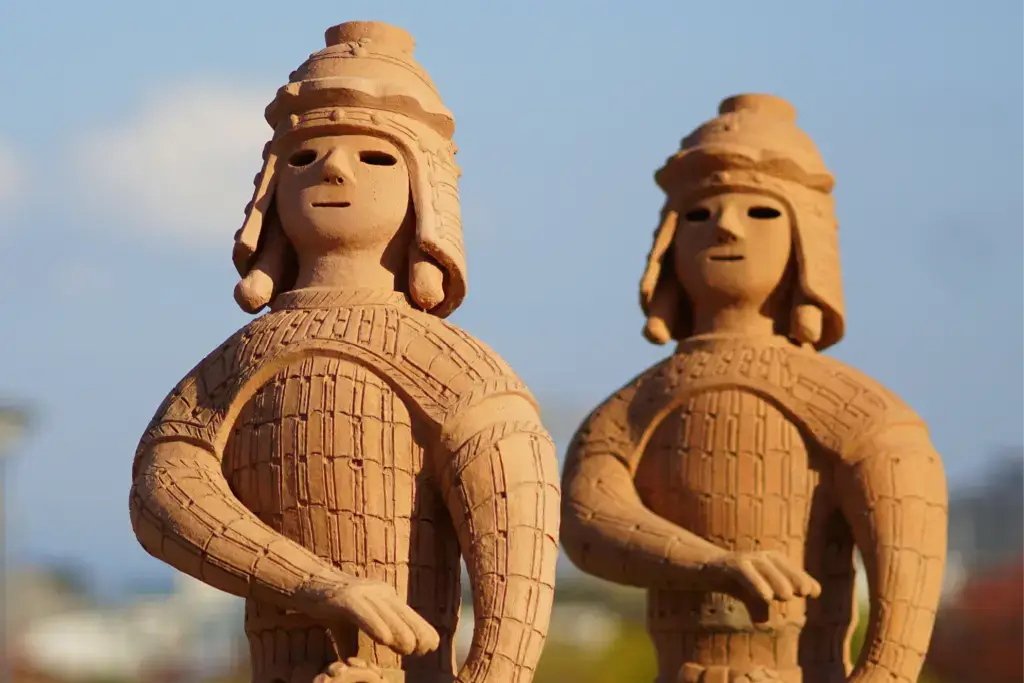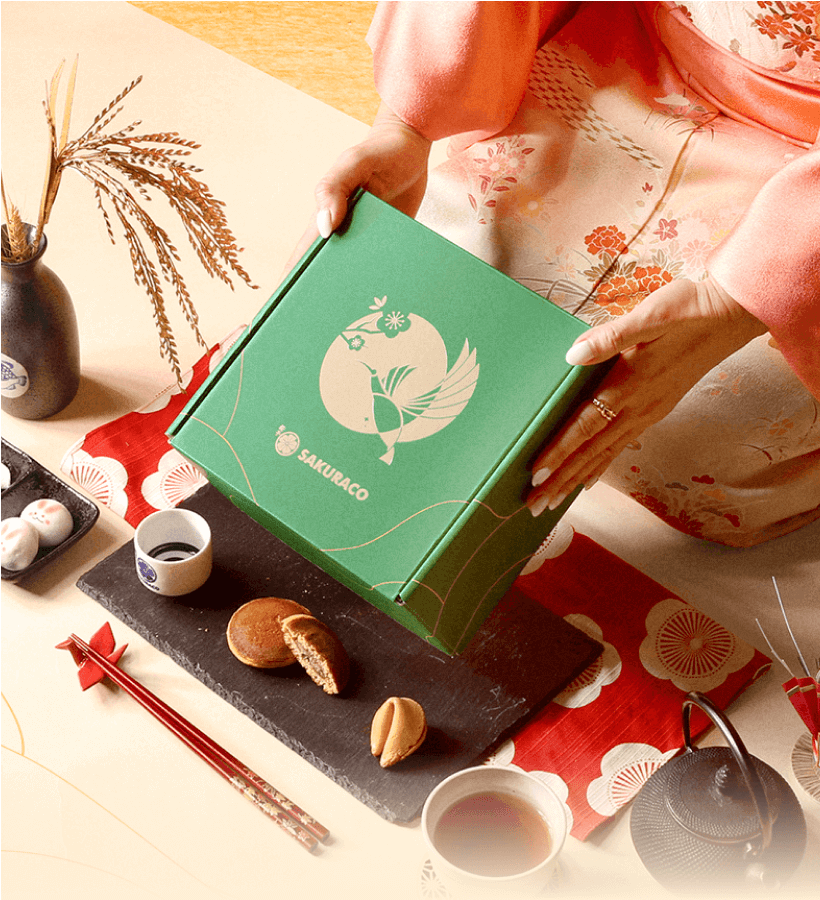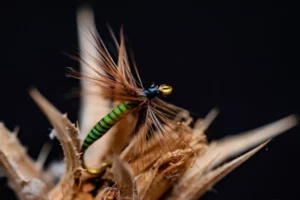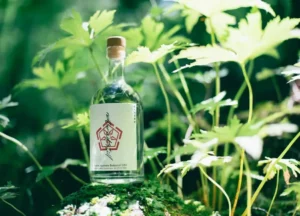Haniwa is one of the oldest forms of Japanese artwork. Artists crafted these basic yet expressive designs centuries ago and continue to captivate people today. These sculptures also hold deep cultural significance, as their evolution directly shapes the origins and formative years of modern Japan.
This and the role of these artifacts in rituals make them integral to understanding Japan’s ancient culture. Archaeologists and history scholars use them to discover new details about the early lives, beliefs, and artistry of those times. Today, we’ll uncover the story behind these figures’ origins, designs, and culture, and see how they bridge the gap between tradition and today’s society.
Table of Contents
ToggleWhat are Haniwa?
Haniwa are about 30 to 150 centimeter-tall (12 to 60 inch) clay figures that originated in ancient Japan. People placed them around the massive ancient burial mounds that builders constructed for the elite of that time. Many believe that these objects served as grave markers and spiritual guardians since they often stood on mounds where people could see them from afar.
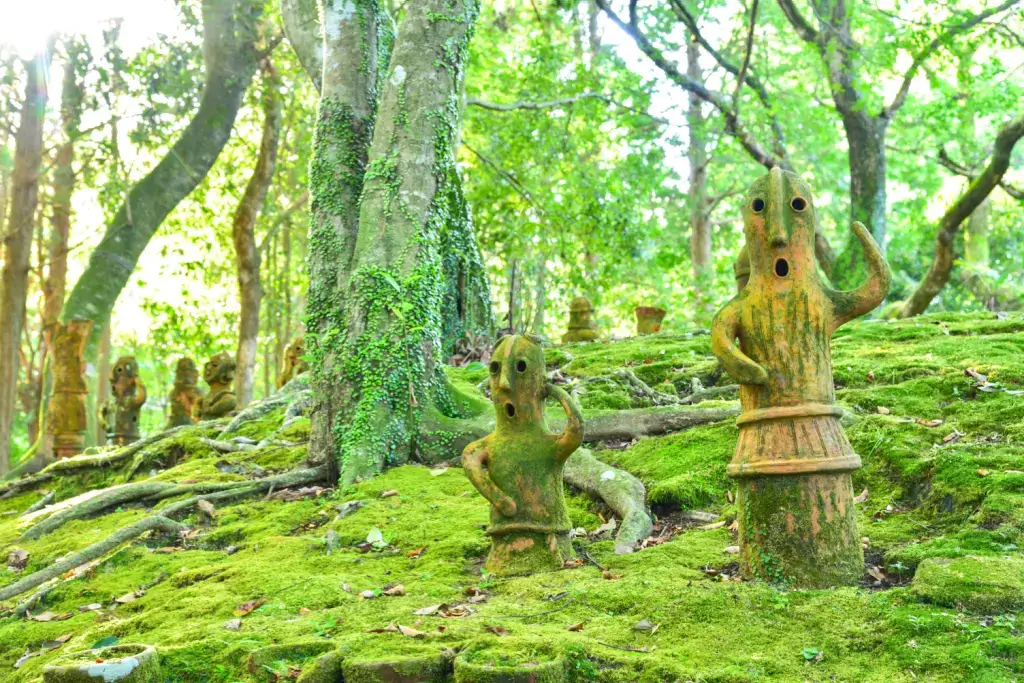
People call these sites “kofun,” and use the term to refer to this period of Japan’s history. The word “kofun” means “clay rings”, which describes the placement of these fired clay objects around the graves. The hollow structure of haniwa distinguishes it from solid sculptures. Early versions of these hand-crafted figures had simple, cylindrical shapes. Over time, they evolved into simple objects like houses and animals. Eventually, artisans started depicting human forms like warriors and dancers.
What is the history of Haniwa?
These sculptures first appeared in the Kofun period (250–710 CE)*, a time of large burial mound construction across Japan. These mounds were built for rulers and housed various treasures. Haniwa served as symbolic protectors of the rulers and their wealth. It is believed that they were substitutes for human sacrifice, a popular way to honour deceased kings in the ancient world.
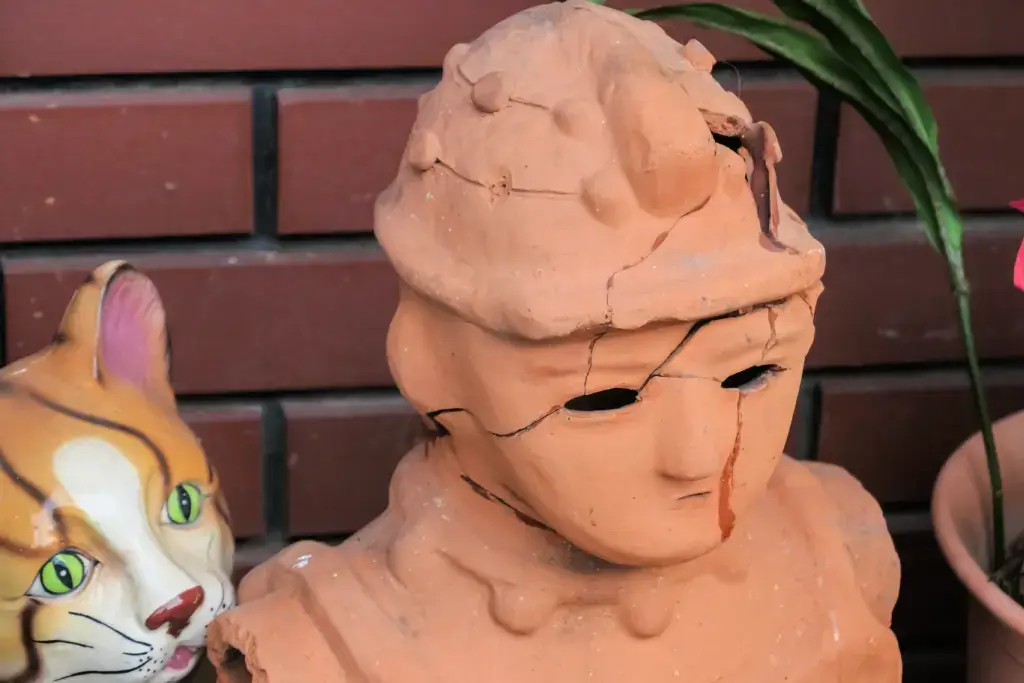
*Editor’s Note: When it comes to the timespan of the Kofun period, sources differ on the years in which it happened. The starting year can range from 250 to 300 CE, while the ending year can be 538 or 710 CE. However, it’s generally agreed that the Kofun period happened between the 3rd and 7th centuries.
As the early Yamato state centralized its power in western Japan, the new stability created a more complex society. It is during this time that haniwa designs started becoming more intricate. By the 5th century, statues with armor, clothing, tools, and facial expressions began appearing. The art form started spreading eastwards and northwards to other parts of Japan. Their creation ceased by the 8th century, as Buddhist practices became more popular and widespread.
Design and Craftsmanship
Haniwa were crafted by hand into their various shapes using coiled clay. Intricate features such as belts and tools were added while the clay was soft. Then, they were fired at low temperatures to harden them carefully. Their earthy tones come from the natural clay used to create them.
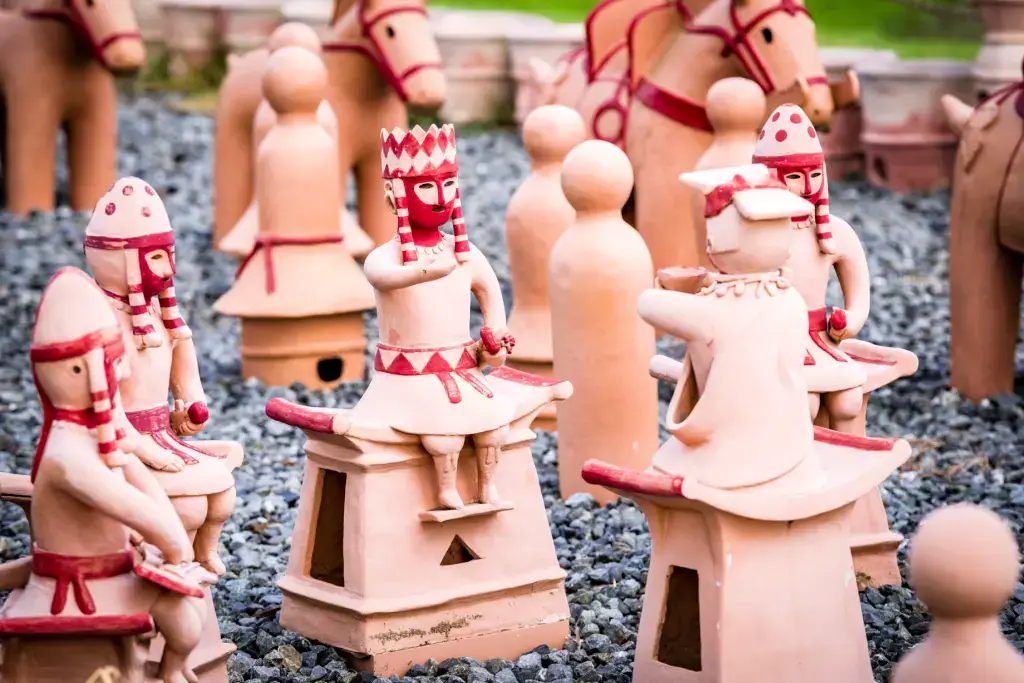
Sites like the Saitama Kofun Cluster, a UNESCO World Heritage candidate, contain thousands of these figures. Excavations reveal regional styles, with Kansai Haniwa often being more detailed. Common types include warriors, priests, and horses.
Are you looking for great snacks to enjoy while learning about Japanese history? Check out Sakuraco! Sakuraco delivers traditional Japanese snacks, teas, and sweets from local Japanese makers directly to your door so you can enjoy the latest treats directly from Japan!
Cultural Significance
Haniwa played a spiritual role in Kofun-period rituals. They guarded tombs and guided spirits, reflecting these early people’s beliefs about the afterlife. Besides protection, the figures also depicted daily activities. Some scholars even link them to magical practices.
Their appeal has endured through the centuries. Even in modern Japan, haniwa have a place in pop culture, and can be found in art, anime, and games like Animal Crossing. Gyoda City’s annual Haniwa Festival, held annually in February, features life-sized replicas. The festival celebrates their legacy with souvenirs shaped in their likeness.
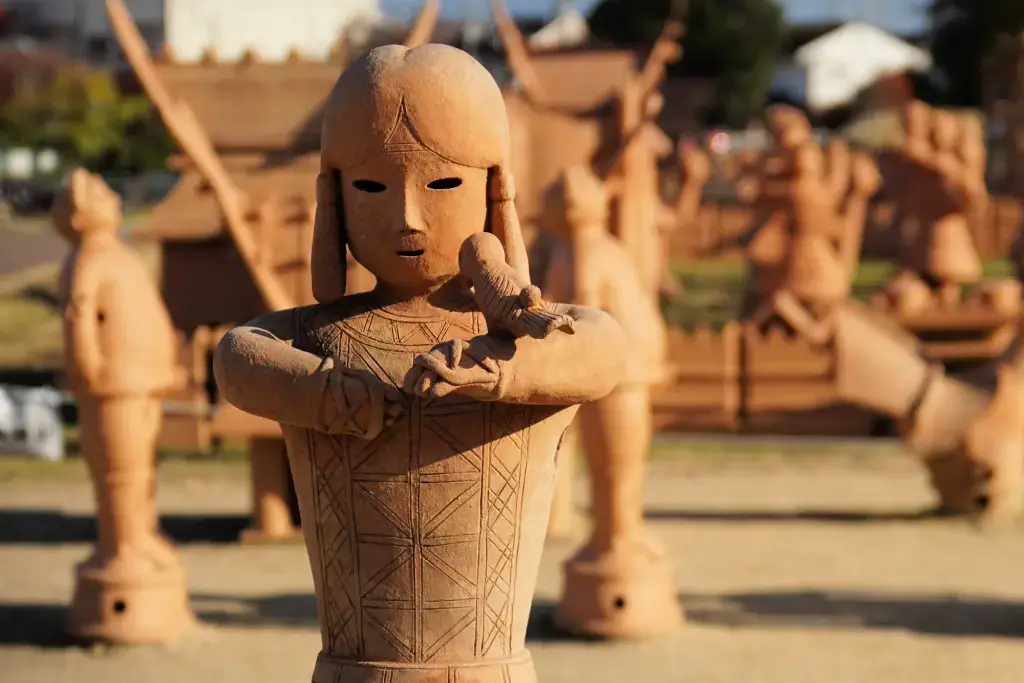
Where can I see the original Haniwa?
Museum exhibitions are great places to see authentic examples. The Nara National Museum, a 15-minute walk from Kintetsu Nara Station, is one such venue. Fine specimens are also at the Saitama Prefectural Museum of the Sakitama Historic Site, a 10-minute bus ride from Gyoda Station. The Tokyo National Museum near Ueno Station often displays these artifacts as well. There are even opportunities to explore kofun sites, such as the UNESCO Mozu-Furuichi Kofungun in Osaka.
Why do haniwa matter in Japan’s culture?
Haniwa matter in Japan’s culture because their artistry and spiritual roles reveal early beliefs. Their changing designs are also a physical record of the country’s history. They offer clues about Japan’s early religious landscape and are an invaluable resource for those studying the pre-Buddhist era.
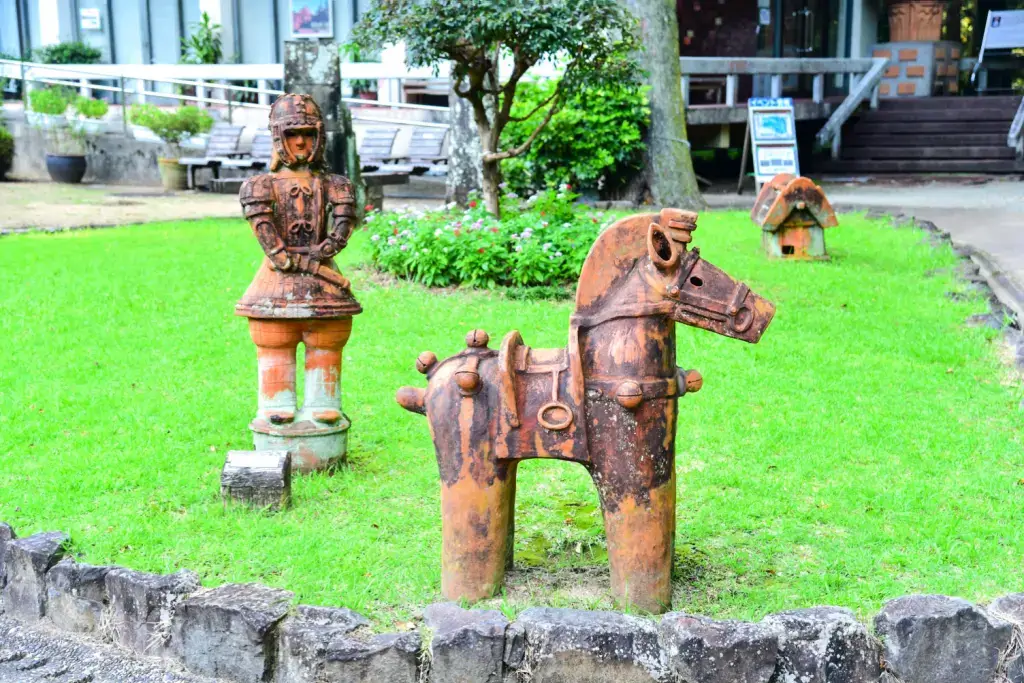
Haniwa are still an influence on Japanese society. Their presence in modern culture keeps the connection to Japan’s old ways alive and invites people to connect with Japan’s historical roots. Their charm lies in their timeless simplicity. Despite the basic forms of their craftsmanship, they foster appreciation for a long-lost art and spark curiosity about Japan’s origins.
Have you seen an authentic Haniwa up close at a museum or exhibition? Do you know of any shapes or types? Do you know any other interesting facts about these statues? Share your knowledge below, and start a conversation!
Cited Sources
- Tokyo National Museum. “The World of Animal Haniwa (Terracotta Tomb Figurines).”
- Britannica. “Haniwa: Japanese Sculpture“.
- The National Museum of Modern Art, Tokyo. “Modern Images of Ancient Clay Figures“.


